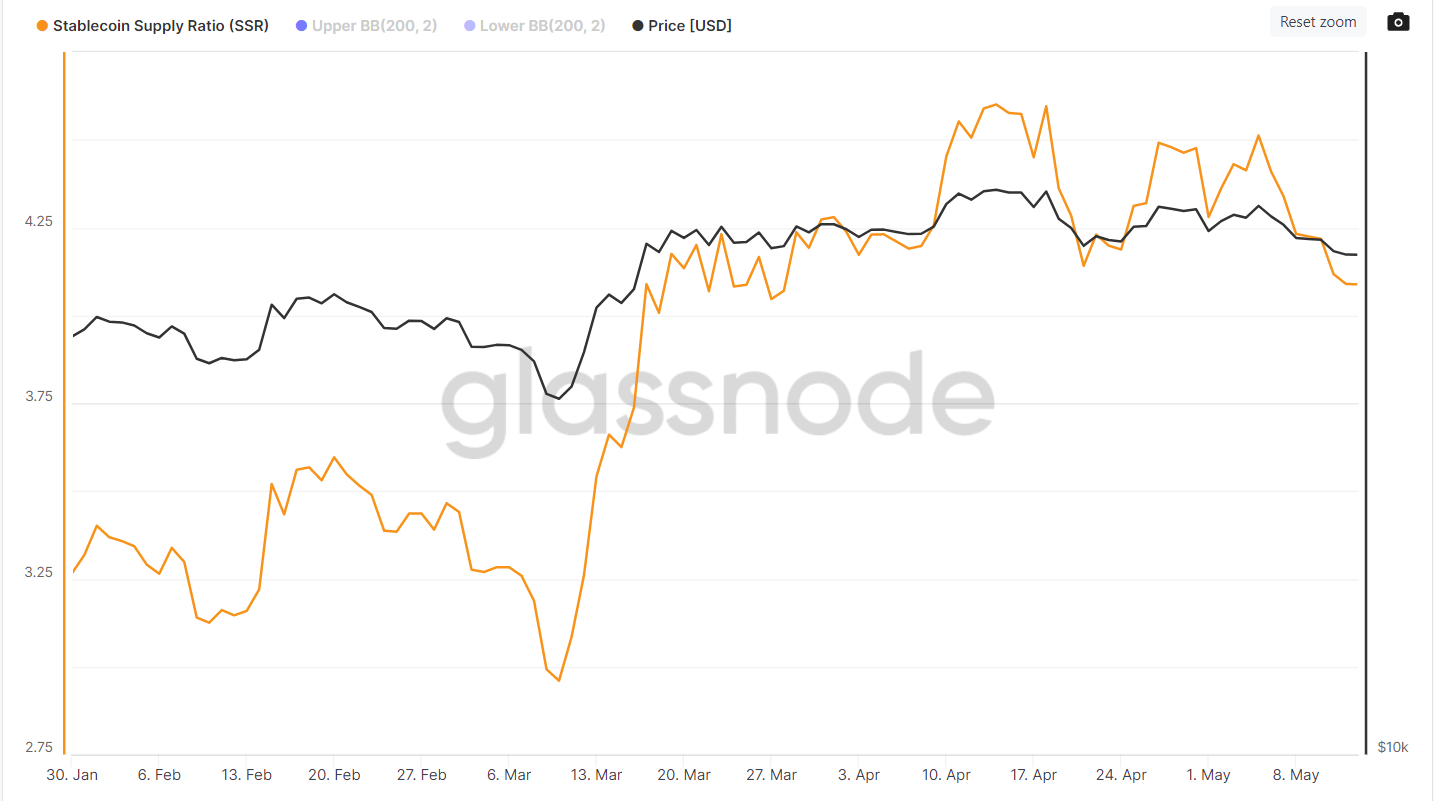ALSO: The stablecoin supply ratio has dropped 11% over the past 11 days, suggesting that buying power for stablecoins may be increasing, writes CoinDesk analyst Glenn Williams.
Good morning. Here’s what’s happening:
Prices: Bitcoin was trading over $27K to recover some lost ground from its plunge last week.
Insights: The stablecoin supply ratio drop of the past 11 days suggests a potential increase in buying power for stablecoins.
Prices

After seven days of plunging prices, bitcoin steadied.
The largest cryptocurrency by market capitalization was recently trading at about $27,165, up 1.1% over the past 24 hours and a little above where it stood when the weekend began. BTC remains down more than 10% since May 5 when it started its most recent swoon, the result of profit-taking and low liquidity against a backdrop of industry-focused and macroeconomic uncertainties.
"Financial markets in general (are) driven by risk, by liquidity, and so, not surprising right now, when people are fearing risk assets as a whole, we're seeing large swaths of selling," Ryan Rasmussen, an analyst for crypto fund manager Bitwise, told CoinDesk TV's "First Mover" program on Friday.
"When there's less liquidity, you're going to have larger swings in price whenever an asset (is) sold." But he added: "There will be more liquidity come into crypto."
Ether, the second largest crypto in market value, was changing hands near $1,800, down a few fractions of a percentage point and about the same level as early Saturday. Other major cryptos moved into green territory as the Asia trading week began with Litecoin recently up more than 5.7%. The CoinDesk Market Index, a measure of the crypto market's performance, was up 0.8%.
Leading Asia indexes were mixed with the Nikkei up about 0.5% but the Hang Seng down 0.2%. Rasmussen noted the declining correlation between crypto and traditional asset markets, which were mixed last week with the tech heavy Nasdaq Composite up slightly over the most recent five days but the S&P 500 and Dow Jones Industrial Average (DJIA) falling 0.2% and 1.1%, respectively.
"Any kind of mistrust in traditional financial systems plays into the hands of crypto," Rasmussen said, adding: "I'm happy to see the correlation fall between traditional risk assets, traditional equities and crypto."
In an email to CoinDesk, Joe DiPasquale, the CEO of crypto fund manager BitBull Capital, noted that the current "macroeconomic situation around the world is creating a conducive environment for crypto assets to thrive."
This week, DiPasquale is looking for bitcoin's price to hold steady in a range between $25,000 and $27,000 "before bouncing toward $30K again."
"We don’t think the market needs a catalyst in the immediate term," he wrote. "It is only a matter of time before we see another major rally."

Insights
What Does the Recent Stablecoin Supply Ratio Mean for Bitcoin?
The Stablecoin Supply Ratio (SSR) has declined approximately 11% over the most recent 11 days, indicating a potential increase in buying pressure for bitcoin.

Stablecoin Supply Ratio (Glassnode)
The metric, which measures the ratio of bitcoin’s market capitalization to the market cap of stablecoins, gives insight into the supply-and-demand dynamics between stablecoins (used as a vehicle to purchase cryptocurrencies) and BTC itself.
A higher SSR indicates that buying power is weakening, while lower values indicate that buying power is increasing.
The recent SSR drop follows a 52% increase between March and May 5. The pivot indicates that additional cash or liquid reserves have entered the market, and could lead to higher BTC prices.
By James Rubin, Glenn Williams | Original Link




